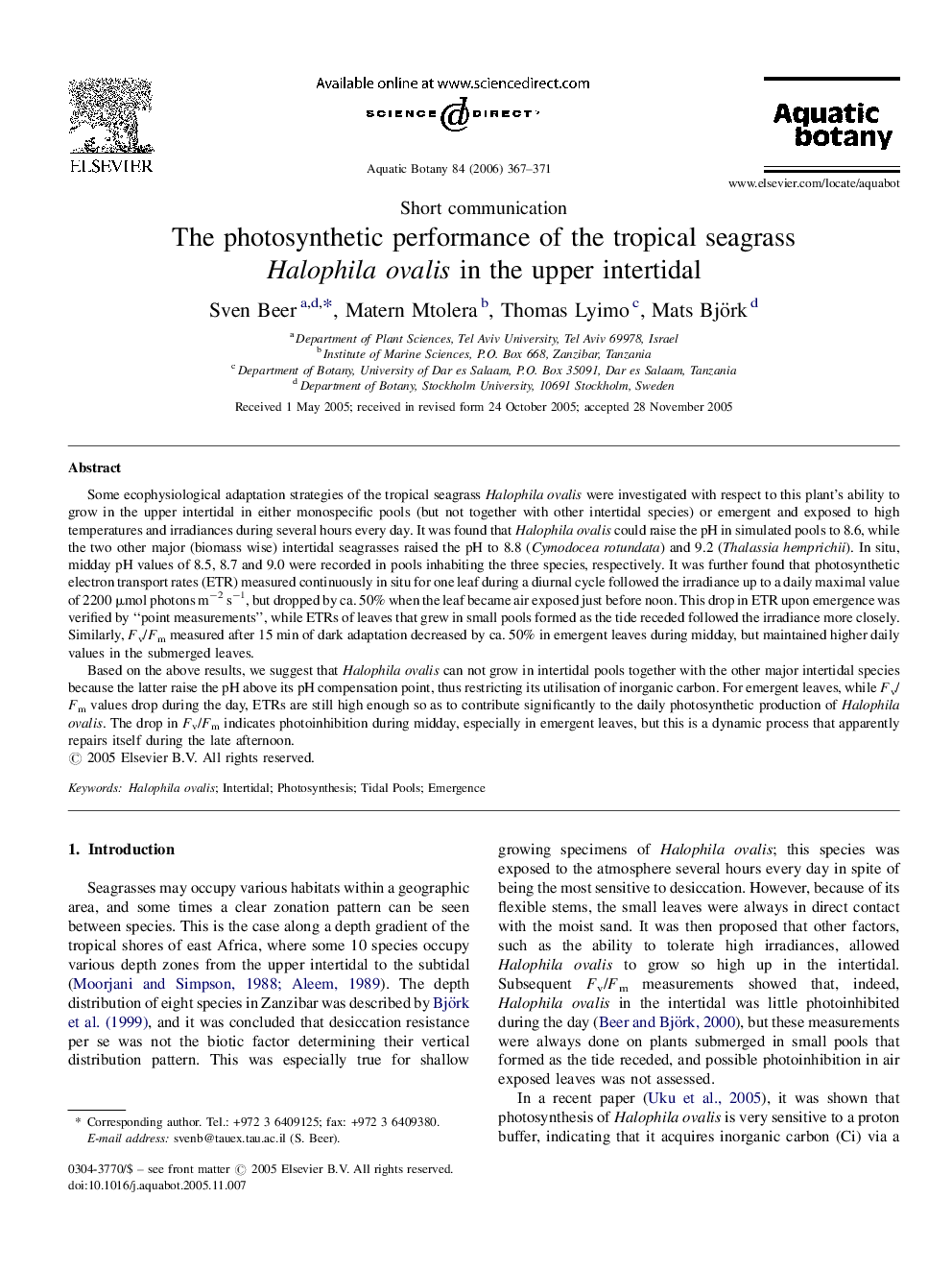| کد مقاله | کد نشریه | سال انتشار | مقاله انگلیسی | نسخه تمام متن |
|---|---|---|---|---|
| 4528744 | 1324325 | 2006 | 5 صفحه PDF | دانلود رایگان |

Some ecophysiological adaptation strategies of the tropical seagrass Halophila ovalis were investigated with respect to this plant's ability to grow in the upper intertidal in either monospecific pools (but not together with other intertidal species) or emergent and exposed to high temperatures and irradiances during several hours every day. It was found that Halophila ovalis could raise the pH in simulated pools to 8.6, while the two other major (biomass wise) intertidal seagrasses raised the pH to 8.8 (Cymodocea rotundata) and 9.2 (Thalassia hemprichii). In situ, midday pH values of 8.5, 8.7 and 9.0 were recorded in pools inhabiting the three species, respectively. It was further found that photosynthetic electron transport rates (ETR) measured continuously in situ for one leaf during a diurnal cycle followed the irradiance up to a daily maximal value of 2200 μmol photons m−2 s−1, but dropped by ca. 50% when the leaf became air exposed just before noon. This drop in ETR upon emergence was verified by “point measurements”, while ETRs of leaves that grew in small pools formed as the tide receded followed the irradiance more closely. Similarly, Fv/Fm measured after 15 min of dark adaptation decreased by ca. 50% in emergent leaves during midday, but maintained higher daily values in the submerged leaves.Based on the above results, we suggest that Halophila ovalis can not grow in intertidal pools together with the other major intertidal species because the latter raise the pH above its pH compensation point, thus restricting its utilisation of inorganic carbon. For emergent leaves, while Fv/Fm values drop during the day, ETRs are still high enough so as to contribute significantly to the daily photosynthetic production of Halophila ovalis. The drop in Fv/Fm indicates photoinhibition during midday, especially in emergent leaves, but this is a dynamic process that apparently repairs itself during the late afternoon.
Journal: Aquatic Botany - Volume 84, Issue 4, May 2006, Pages 367–371